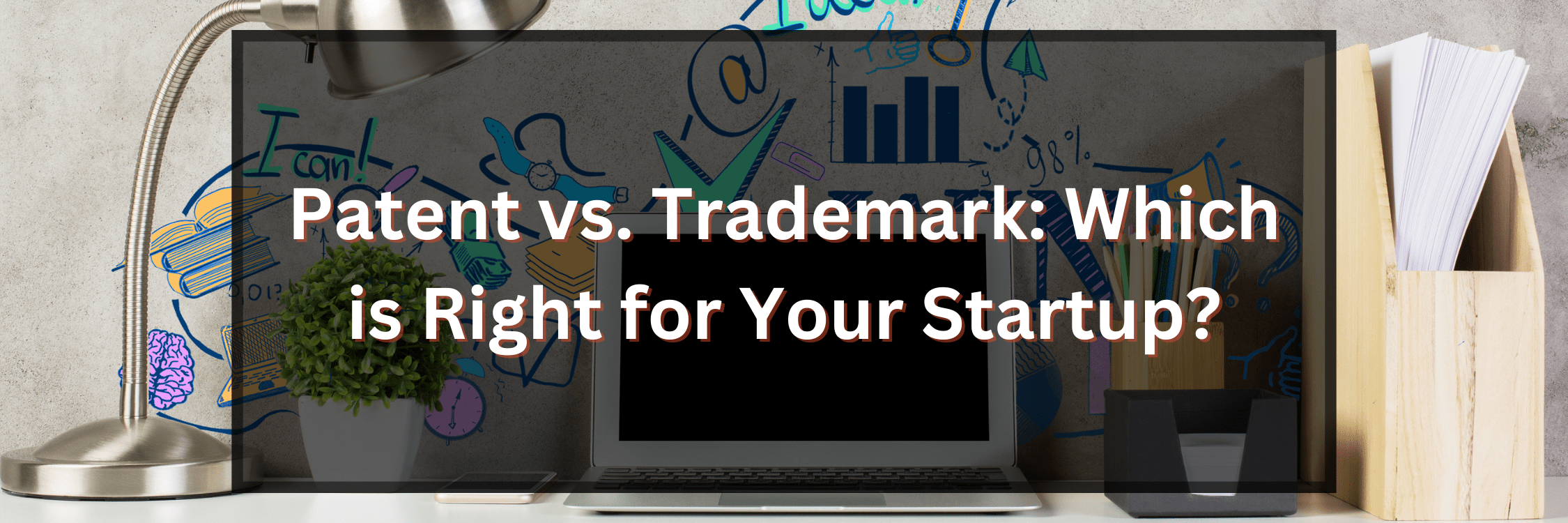In the intricate world of intellectual property protection, startups often find themselves at a crossroads, faced with the decision of whether to pursue a patent or a trademark. Each form of protection serves a distinct purpose, and understanding the nuances can be pivotal for startups aiming to safeguard their innovations and brand identity. This guide provides a comprehensive comparison of patents and trademarks, offering insights to help startups make informed decisions aligned with their specific needs and objectives.
1. The Fundamental Differences
At the outset, it’s crucial to grasp the fundamental differences between patents and trademarks. Patents primarily protect inventions and innovations, granting exclusive rights to their creators. On the other hand, trademarks focus on safeguarding brand identity, including logos, names, and symbols, to ensure that consumers can identify and distinguish products or services in the marketplace.
2. Purpose and Scope of Protection
The choice between a patent and a trademark often boils down to the nature of what a startup seeks to protect. Patents are ideal for protecting novel inventions, processes, or designs, providing the inventor with the exclusive right to make, use, and sell the patented innovation for a limited period, typically 20 years. Trademarks, on the other hand, are geared towards protecting the distinctive elements that identify and represent a brand, such as logos, names, and slogans.
3. Protecting Innovations with Patents
For startups with groundbreaking inventions, the patent route is a strategic choice. Patents can be obtained for three main categories: utility patents for functional inventions, design patents for ornamental designs, and plant patents for new plant varieties. This form of protection prevents others from making, using, or selling the patented invention without permission, giving the startup a competitive edge in the market.
4. Safeguarding Brand Identity with Trademarks
Trademarks, on the contrary, are the guardians of brand identity. They protect the visual and verbal elements that distinguish a brand in the marketplace. Whether it’s a unique logo, a catchy name, or a memorable slogan, trademarks ensure that consumers can identify and trust products or services associated with the brand. Trademark protection is not time-limited, as long as the mark is in use and continues to be distinctive.
5. The Duration of Protection
One significant distinction lies in the duration of protection offered by patents and trademarks. Patents provide exclusive rights for a limited period, typically 20 years from the filing date. Once the patent expires, the protected invention enters the public domain. In contrast, trademarks can provide perpetual protection as long as they are actively used in commerce and continue to serve as distinctive identifiers of the brand.
6. Application Process and Costs
The application processes for patents and trademarks differ significantly. Patent applications undergo a rigorous examination process by patent offices to ensure that the invention meets the criteria for patentability. This process often involves technical documentation, legal expertise, and can be time-consuming. Trademark applications, while still subject to examination, are generally more straightforward, focusing on the distinctiveness and potential for confusion with existing marks. The costs associated with each process can vary, with patent applications often incurring higher expenses.
7. Geographic Scope of Protection
Another critical consideration is the geographic scope of protection. Patents are typically territorial, meaning that protection is limited to the specific jurisdiction where the patent is granted. For startups with global ambitions, obtaining patents in multiple jurisdictions may be necessary. Trademarks, however, can be registered at the national, regional, or international levels, providing more flexibility in establishing a broader footprint in the marketplace.
8. Enforcement and Legal Recourse
Enforcing patent rights involves taking legal action against infringers, which can be a complex and resource-intensive process. However, the exclusive rights granted by a patent provide a strong foundation for legal recourse. Trademarks offer a more immediate avenue for enforcement. The distinctiveness of a trademark, coupled with the potential for consumer confusion, can lead to swifter legal action against infringers, often resulting in injunctive relief and damages.
9. Strategic Considerations for Startups
For startups, the choice between a patent and a trademark is inherently tied to their business strategy and goals. If the startup’s value proposition rests on a groundbreaking invention or technology, pursuing a patent can create a formidable barrier to entry for competitors. Conversely, if the startup’s success hinges on building a recognizable brand, trademark protection becomes paramount to establish a lasting and distinguishable market presence.
10. A Balanced Approach: Using Both Patents and Trademarks
In some cases, startups may find that a balanced approach involving both patents and trademarks is optimal. This dual strategy allows startups to protect both their innovative products and the brand that represents them. By securing exclusive rights to inventions through patents and establishing a strong brand identity with trademarks, startups can create a comprehensive and resilient intellectual property portfolio.
Conclusion
In the labyrinth of intellectual property protection, startups must navigate the distinct paths laid out by patents and trademarks. The decision hinges on the nature of the startup’s innovations and its strategic goals. While patents safeguard groundbreaking inventions and technologies, trademarks fortify the identity and reputation of a brand in the marketplace. Whether it’s securing exclusivity for a limited period through patents or establishing perpetual brand recognition through trademarks, startups can make informed decisions to safeguard their intellectual property effectively and chart a course for long-term success.





